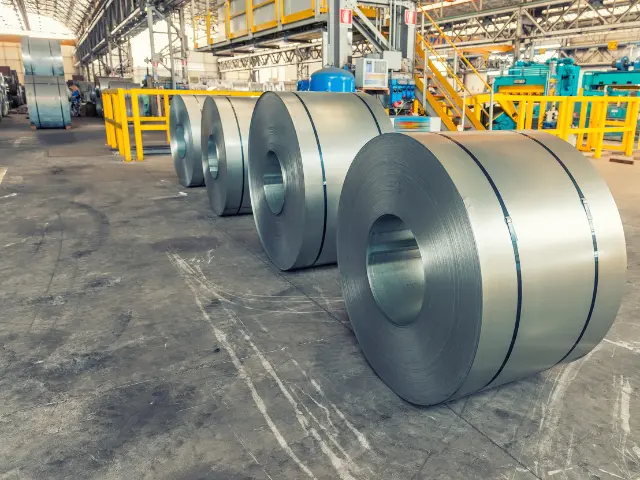
Stainless steel has a recovery rate that is very near to 100% and is completely recyclable. Additionally, it is inert and environmentally neutral, and its durability guarantees that it satisfies sustainable building requirements.
Stainless steel is also very sanitary, visually pleasing, simple to maintain, strong, and adaptable. These reasons contribute to the widespread usage of stainless steel. Additionally, it is widely employed in various sectors, including logistics, electricity, transportation, construction, and scientific research. Do you have some knowledge of stainless steel manufacturing but are unsure of what it is or how it functions? Here is additional information on it.
Techniques of stainless steel fabrication used by experts
Stainless steel is a versatile and popular material known for its durability, corrosion resistance, and aesthetic appeal. It is widely used in various industries, including construction, automotive, aerospace, and manufacturing. Stainless steel fabrication involves transforming raw stainless steel into finished products or components using different techniques and processes. In this blog, we will explore some of the most commonly used techniques in stainless steel fabrication.
Cutting Techniques
Cutting is the initial step in stainless steel fabrication. Depending on the desired shape and precision, several methods are used to cut stainless steel sheets, plates, or pipes. The main cutting techniques include:
Shearing:
This process involves cutting stainless steel sheets using a shear machine. Shearing is suitable for straight cuts and cost-effective for high-volume production.
Laser Cutting:
Laser technology offers precise and intricate cuts. It melts and vaporises the stainless steel with a high-powered laser beam, creating clean and accurate cuts.
Waterjet Cutting:
Waterjet cutting utilizes a high-pressure stream of water mixed with an abrasive substance to cut through stainless steel. This highly flexible technique can produce complex shapes with minimal material waste.
Forming Techniques
Forming techniques are used to shape stainless steel into desired geometries. Some common forming techniques in stainless steel fabrication are:
Bending:
Stainless steel can be bent or formed using a press brake machine at various angles and curves. This technique allows for the creation of precise shapes with minimal distortion.
Roll Forming:
Roll forming is ideal for producing long, continuous shapes like tubes or channels. Stainless steel strips are passed through rollers, gradually shaping them into the desired form.
Deep Drawing:
Deep drawing involves stretching a sheet of stainless steel over a die to form a three-dimensional shape, such as a cylindrical container or a sink. This technique is commonly used in the production of kitchenware and automotive parts.
Joining Techniques
Joining techniques are employed to connect different stainless steel components. Some popular Stainless Steel Fabrication Services methods include:
Welding:
Stainless steel can be welded using various methods, including TIG (Tungsten Inert Gas) welding, MIG (Metal Inert Gas) welding, and spot welding. Welding creates a strong bond between stainless steel pieces, ensuring structural integrity.
Brazing:
Brazing involves joining stainless steel components using a filler metal that melts at a lower temperature than the base metal. This technique is often used when high joint strength is required.
Mechanical Fastening:
Mechanical fasteners connect stainless steel parts, such as screws, bolts, and rivets. Mechanical fastening offers flexibility and ease of disassembly, making it suitable for temporary or adjustable structures.
Finishing Techniques
Finishing techniques are applied to stainless steel surfaces to enhance their appearance and protect against corrosion. Common finishing methods include:
Polishing:
Polishing removes surface imperfections and scratches, producing a smooth and reflective finish. Various polishing techniques, including mechanical and electropolishing, are used to achieve different levels of shine.
Passivation:
Passivation is a chemical process that removes impurities and contaminants from the stainless steel surface, promoting the formation of a protective oxide layer. This technique enhances corrosion resistance.
Powder Coating:
Powder coating involves applying a thin layer of dry powder to the stainless steel surface and curing it using heat. This technique provides a durable and aesthetically pleasing finish while offering additional protection against corrosion.
Melting the Ingredients
In a furnace, the different stainless steel parts are heated until they melt. This process might take anywhere between 8 and 12 hours, according to metalsupermarkets.com and other sources. Once the metal is molten, stainless steel manufacture may go on to the next phase.
Carbon Removal in Excess
The liquid metal is placed in a vacuum oxygen or argon oxygen system to get rid of extra carbon. This process results in either a regular or low-carbon form of the alloy, depending on how much carbon is removed. These are made of stainless steel grades 304 and 304L. Of course, this affects the tensile strength and hardness of the final product.
Heat treating or annealing
Stainless steel can be annealed (cooled and heated under controlled conditions) to reduce internal tensions and alter the steel’s mechanical properties. To avoid harm to the shielding oxide layer, the steel may need to be descaled if it has been annealed.
Conclusion
Stainless steel fabrication from our team at Star Aluminium involves a range of techniques to transform raw stainless steel into functional and visually appealing products. From cutting and forming to joining and finishing, each technique plays a crucial role in shaping stainless steel into desired forms. By understanding these techniques, manufacturers and designers can harness the full potential of stainless steel, ensuring the production of high-quality and durable products across various industries.
